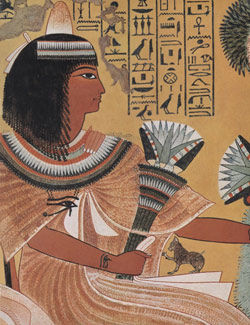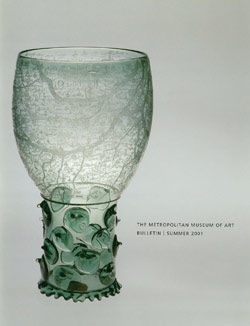Spindle Bottle with Handle
New Kingdom, Amarna Period
Egyptian glass vessels were often modeled after vessels originally made in other materials. This slender flask of turquoise glass was copied from an imported pottery "spindle bottle" of the type that Syrians are depicted carrying in contemporary Egyptian tomb paintings, actual examples of which would most likely have contained some sort of resin. The flask was core-formed and finished by hand, with the strap handle applied separately. The elongated, ovoid body and slender neck were decorated with finely executed zigzags of dark blue and white glass. The handle is embellished with repeating bands of dark blue, yellow, and white. Glass objects were first imported into Egypt from the Near East in the joint reign of Hatshepsut and Thutmose III. Egyptian craftsmen, who had more than a millennium of experience manufacturing the related substance faience, quickly added the art of glass making to their repertoire.
Due to rights restrictions, this image cannot be enlarged, viewed at full screen, or downloaded.



